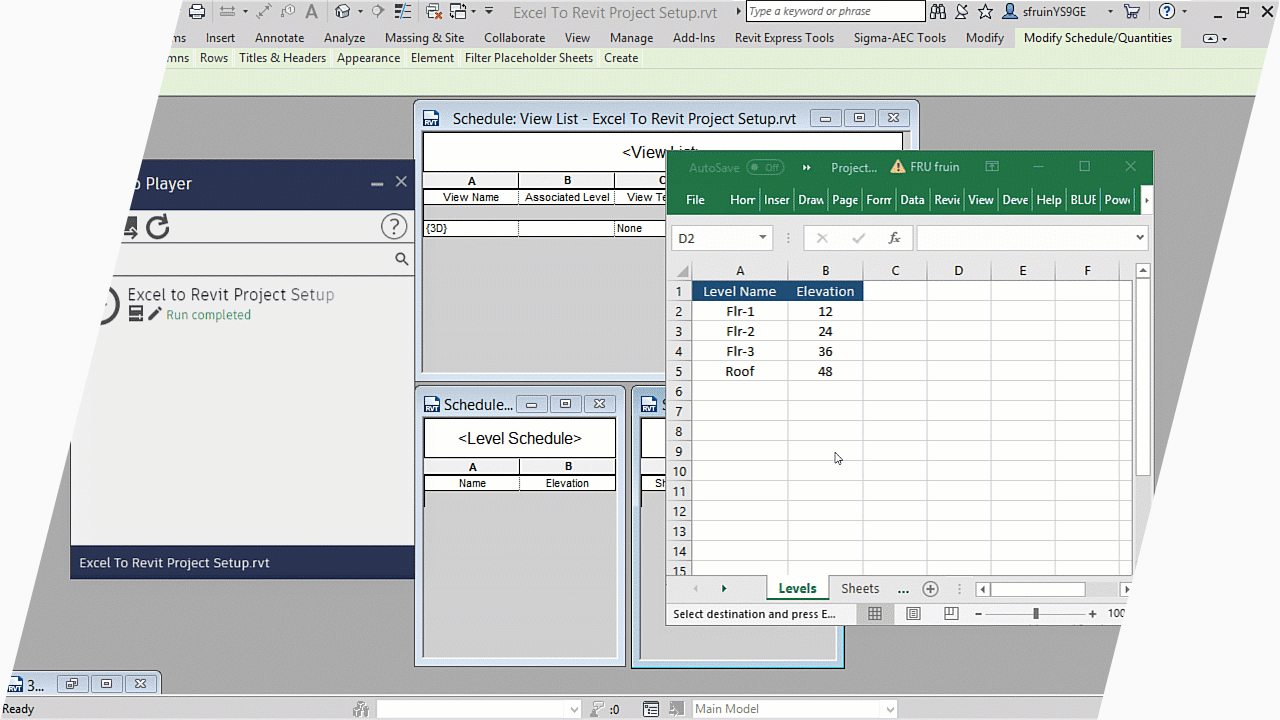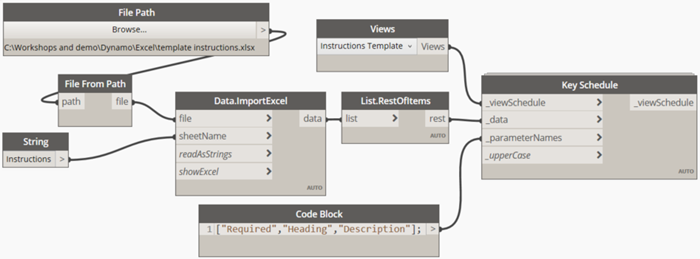Revit Tools: Your Secret to Precision and Performance
Wiki Article
Breaking Barriers: Excel Importation Techniques for Advanced Revit Users
Are you an advanced Revit individual aiming to take your skills to the following degree? In this article, we will reveal you just how to damage obstacles by leveraging Excel for importation in Revit. Discover numerous data importation methods and master Excel assimilation to boost your Revit modeling abilities. With our methods and pointers, you can conquer importation challenges and end up being a real specialist in making use of Excel for your Revit jobs. Prepare to succeed in your Revit trip!Advanced Revit Users: Leveraging Excel for Importation
You can easily utilize Excel for importation as an advanced Revit individual. Excel is an effective device that can greatly boost your workflow and performance in Revit. With its ability to manage large quantities of data and perform complex estimations, Excel can be a valuable asset in managing and organizing your project details.One method to take advantage of Excel for importation is by utilizing the "Link Excel" function in Revit. This attribute enables you to link an Excel spread sheet directly right into your Revit task, enabling you to upgrade and synchronize data between both programs. When dealing with schedules or tracking changes in your job., this can be especially beneficial.
One more means to use Excel is by utilizing the "Import/Export" attribute in Revit. This attribute permits you to import and export information in between Revit and Excel, providing you the adaptability to deal with information in both programs. You can import data from Excel into Revit to produce elements such as wall surfaces, doors, or rooms, and you can likewise export information from Revit to Excel for additional analysis or coverage.

Exploring Data Importation Techniques in Revit Using Excel
Discovering how to import information from Excel into Revit supplies effective approaches for integrating details. When you import data from Excel, you can effortlessly move data such as room timetables, product checklists, and devices information right into your Revit job. This procedure enables you to save effort and time by preventing hand-operated data entry.To import information from Excel into Revit, you can use the "Import/Export" attribute. This function allows you to map the Excel data fields to the matching Revit criteria, making certain that the details is correctly appointed within the version. By choosing the suitable import choices, you can regulate exactly how the data is imported and just how it connects with your project.
An additional method for importing data from Excel right into Revit is by making use of Eager beaver. Eager beaver is an aesthetic programs tool that incorporates with Revit and allows you to automate jobs and operations. With Dynamo, you can produce customized manuscripts that import information from Excel and control it within your Revit task. This technique supplies much more adaptability and customization options.
Understanding Excel Combination for Advanced Revit Modeling
Mastering Excel integration for innovative Revit modeling includes making use of efficient methods to effortlessly move information and automate jobs within your job. By harnessing the power of Excel, you can enhance your Revit modeling workflow and save websites beneficial time. One crucial technique is importing information from Excel spread sheets directly into your Revit version. This enables you to occupy criteria, such as space names or product amounts, easily. With a few straightforward steps, you can map the Excel columns to the corresponding Revit parameters and import the data accurately.An additional beneficial approach is exporting data from Revit to Excel. This allows you to draw out information from your model, such as routines or material amounts, and examine it in Excel using formulas, charts, or various other effective devices. By leveraging the capacities of Excel, you can do complex computations, develop customized reports, and gain valuable understandings into your project.
Along with information transfer, Excel combination can automate recurring tasks in Revit. By producing macros or scripts in Excel, see this site you can automate processes like producing views, generating sheets, or applying conventional families - revit tool. This not only conserves time however also makes certain uniformity across your project
To understand Excel integration in Revit, it is vital to comprehend the data framework and just how Revit communicates with Excel. By familiarizing on your own with the readily available tools and strategies, you can unlock the full capacity of Excel integration and take your Revit modeling to the next level.
Conquering Importation Difficulties: Excel Techniques for Revit Experts
When getting over importation challenges, it is necessary to be aware of effective Excel methods that can profit experts in Revit. As an advanced Revit customer, you understand the relevance of flawlessly importing data from Excel right into your projects. However, you may run into various challenges in the process. By utilizing efficient Excel strategies, you can get rid of these challenges and boost your performance.
One more helpful technique is making use of the "Transpose" feature in Excel. This permits you to convert data from rows to columns or the other way around. When importing information into Revit, this can be especially handy when you have data in a vertical layout in Excel, however you require go to the website it to be in a horizontal layout in Revit.
In addition, making use of Excel solutions such as VLOOKUP and INDEX-MATCH can significantly help in mapping data from Excel to Revit. These solutions allow you to look for certain values in Excel and fetch corresponding information from one more column. When importing big datasets into Revit., this can save you time and effort.
Excel Information Importation Idea for Advanced Revit Users
By acquainting yourself with reliable Excel tricks and ideas, you can boost your information importation procedure as an advanced customer of Revit. In addition, using Excel's "Paste Unique" attribute allows you to paste information from Excel into Revit while preserving formatting, such as cell color or font style. An additional helpful technique is to use Excel's "Locate and Change" feature to rapidly make modifications to your information prior to importing it into Revit.
Conclusion
You have now found out valuable strategies for importing information from Excel into Revit as an innovative individual. By leveraging the power of Excel assimilation, you can streamline your modeling procedure and conquer any kind of importation challenges that may develop. With these tips and methods, you will be able to understand information importation and improve your Revit abilities. So go on, damage those barriers and stand out in your Revit jobs!
When importing information right into Revit, this can be particularly helpful when you have data in a vertical style in Excel, but you need it to be in a straight format in Revit.
Moreover, utilizing Excel solutions such as VLOOKUP and INDEX-MATCH can greatly aid in mapping data from Excel to Revit. Additionally, utilizing Excel's "Paste Special" function allows you to paste data from Excel into Revit while keeping format, such as cell color or font design.
Report this wiki page